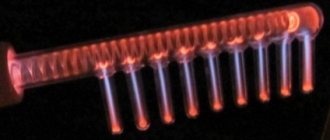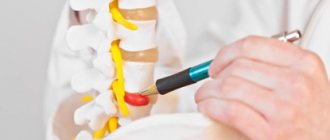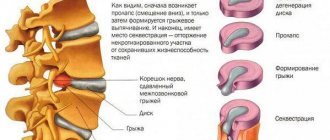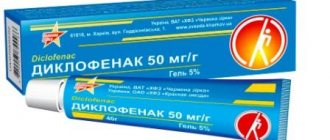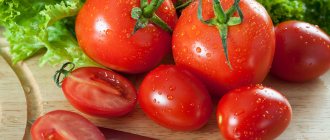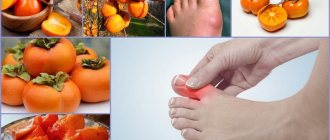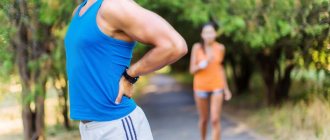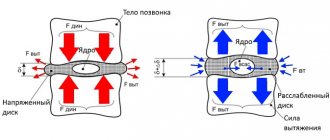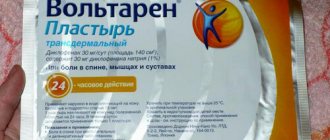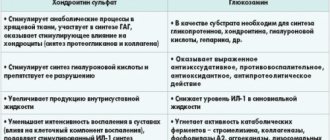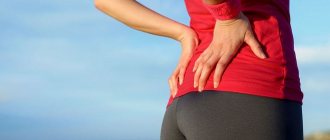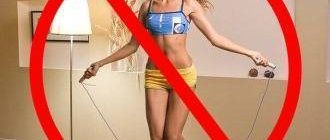Nowadays, when information, including pharmaceutical information, is supplied with great redundancy, when the overproduction of drugs and their range exceeds the need many times over, pharmaceutical companies have the opportunity to “fish in troubled waters.” And an example of a “relatively honest money grab” can be considered the use of chondroprotectors for spinal hernia, or, more precisely, for herniated intervertebral discs, which are complications of osteochondrosis, osteoarthrosis, and other joint diseases. Why are chondroprotectors needed at all?
Essence of the question
There are entire groups of drugs that are well suited for generating large profits, with minimal risk for the manufacturing company. To do this, it is desirable that the following conditions be met:
- the disease was long-term (chronic), without danger to life and critical conditions;
- the drug must not be potent, narcotic, or have restrictions on its sale, the drug must be sold without a prescription;
- the medicine should not have significant side effects;
- the drug should not be expensive to produce. Source materials must be available;
- the positive effect must be subjective, different for everyone, and confusing. It is advisable that the benefits of the drug cannot be interpreted clearly and unambiguously, given good demand.
The last sentence needs special explanation. For example, if an anemia drug treats anemia, then evidence of its clinical effectiveness is an increase in the level of hemoglobin in the blood, the percentage of hemoglobin in the red blood cell, an increase in the color index, and an increase in the binding of iron to plasma proteins. This can be measured quantitatively.
In the case of treating joint pain, the only criterion for effectiveness remains the patient’s personal opinion, which may be incorrect.
In connection with these circumstances, entire groups of drugs have appeared, created for substances that are not potent. The products are sold without a prescription and are recommended for “long-term use,” but are also expensive (Arthra, the cost of a pack of 30 tablets is 1,021 rubles in 2021).
They are called oral (that is, used in the form of tablets and capsules) chondroprotectors, and should protect joint cartilage from destruction, promote their regeneration, and reduce signs of arthrosis and arthritis, such as pain and crunching in the joints and stiffness. How do chondroprotectors work from the manufacturers' point of view?
Symptoms
Most types of protrusions are asymptomatic for a long time. The first signs of pathology appear only when the formations begin to put pressure on the nerve roots.
The most noticeable manifestations are:
- pain: intensity and duration depend on the size and location of the protrusion; there are both acute, strong, but short-lived attacks, and prolonged, aching pain;
- radicular syndrome can manifest itself as a violation of sensitivity, motor function, functioning of internal organs, as well as a combination of various malfunctions depending on the type of protrusion.
Protrusion in the lumbar and sacral region
This is the most common localization of the pathological process. The epicenter of pain is located in the lumbar region, but the sensations often radiate to the buttock, leg or abdomen. When moving, the pain intensifies, and pronounced muscle spasm develops. Nerve root damage usually manifests itself:
- nagging pain in the leg;
- pathological sensations (paresthesias) - a burning sensation, numbness, crawling sensations in the legs or groin area;
- decreased muscle strength and weakened reflexes on the affected side.
Protrusion in the cervical spine
The characteristic symptoms of this pathology are:
- aching or sharp pain in the neck, which increases significantly with movements and attempts to turn the head; sensations can spread to the back of the head, shoulder, arm;
- severe spasm of the neck muscles, which makes turning the head difficult;
- tingling, burning in the hand on the affected side, weakening of muscle strength and reflexes;
- headaches, dizziness.
Protrusion in the thoracic region
It is extremely rare due to the relatively low mobility of this area and the low load on it. Typically, protrusions form against the background of injuries and are accompanied by pain and discomfort when breathing, and a feeling of lack of air. If the protrusion is located in the lower part of the thoracic region, it can affect the functioning of the pelvic organs, intestines, and the menstrual cycle in women.
Proposed mechanism of action
If you open any instructions for a chondroprotector, you can read something like the following.
Active ingredients such as glucosamine and chondroitin sulfate are sources of connective tissue, they stimulate its regeneration and prevent the aging process and disc destruction. Their introduction into the body enhances the production of cartilage tissue, which consists of proteoglycans and type 2 collagen.
Along the way, the active ingredients protect cartilage from the action of enzymes, suppress the activity of hyaluronidase, improve the physicochemical properties of synovial fluid, and stimulate cartilage repair. With a course of use, the symptoms of the disease are alleviated, which primarily include pain and decreased mobility.
Everything seems beautiful and clear. However, only at first glance. The cartilage and optical media of the eye are not supplied with blood. Their feeding mechanism is different. Let's take a closer look at it.
Features of articular cartilage nutrition
Unlike other organs and tissues, cartilage is not able to receive nutrition directly from blood vessels. The vascular bed, entwining the joint in its depths, will interfere with movement, increase the risk of vascular ruptures, and become defective. Therefore, nutrition of the articular surfaces occurs diffusely, through the synovial fluid. The growth and development of cartilage can be schematically represented as follows.
Imagine a wall made entirely of clay. On one side of it there is a worker who is constantly scraping off the dried clay, trying to destroy the wall. And on the opposite side, another worker tirelessly throws fresh portions of mortar onto the wall. As a result, with coordinated work, the wall will be constantly updated. Only in the case of workers will it move, and in the case of cartilage will it remain in place, since these processes occur simultaneously on all sides. The intervertebral disc is constantly worn out, and the synovial fluid “supplies” the necessary nutrients.
These substances are glycosaminoglycans - the “building blocks” of connective tissue: chondroitin sulfate and glucosamine.
Additional recommendations
To enhance the effect of chondoprotectors, it is advisable to follow certain rules:
- Exercise daily. Movement increases blood flow, and this contributes to the timely delivery of active substances to the lesion.
- When working hard, you should rest for 10 minutes every hour.
- To avoid aggravating the situation, you should not make sudden movements and try not to fall.
- Hypothermia, especially of the legs, is unacceptable.
- It is necessary to normalize your weight.
There is no need to wait for a quick effect; a positive result will be achieved only after a few months.
About evidence-based principles in medicine
Let's make a small digression. Modern advanced medicine can no longer afford to waste public and private funds on ineffective and ineffective projects and drugs. Therefore, since the 1990s, the term “Evidence Based Medicine” has been adopted. Its motto is the words spoken by Professor D. Sackett: “Evidence-based medicine is the conscious, clear and intelligent use of the best evidence currently available to make decisions for each patient.”
The basis for following an evidence-based approach in medicine is the question of scientific evidence. Treatment from the point of view of evidence-based medicine is a clear algorithm for prescribing reliably effective drugs. Before starting treatment, the doctor must answer three questions:
- What is the goal of therapy (complete cure, prevention of relapse, elimination of symptoms)?
- what drugs are most effective?
- What will be the treatment plan?
It becomes clear that chondroprotectors cannot cure a patient with spinal arthrosis and osteochondrosis. Even if they protected the patient 100%, the process of cartilage destruction intensifies with age and increasing dehydration. There is also no data on the effectiveness of chondroprotectors (if we take Cochrane reviews, the FDA, and other serious sources). , because sales of these drugs in the world amount to billions of dollars. Why? But simply because of the patients’ commitment. No harm? No. Well, let them buy it.
Therefore, opening almost any instructions for such a medicine, you can read, for example, that “no studies of the effect in pregnant women have been conducted.” Why carry out some standard and costly research when there is no harm, and people buy it anyway?
Let's see what the most popular representatives of chondroprotectors contain.
Representatives of chondroprotectors
There are several generations of chondroprotectors. The first generation is “extracts” from animal and fish cartilage (“Alflutop”, “Rumalon”). Here's an example.
Alflutop
Alflutop is a mixture of four types of small sea fish, sprat, and anchovies formed into an extract. There are no official or international data on the proven effectiveness of this medicine. There are no recommendations from the World Health Organization (WHO), no approval by the formulary committee of the Russian Federation, and there is no need to talk about Cochrane reviews or FDA approval.
Dona, Elbona...
The second generation is already purified preparations of glucosamine and chondroitin sulfate (soluble salt of chondroitin). These are Dona, Elbona, Sustilak, Sustagard Artro, Artracam (contain only glucosamine). But the supplements Artra, Structum, Chondroguard, Mucosat contain only chondroitin sulfate. There are also a large number of drugs that combine glucosamine and chondroitin sulfate in one capsule. These include classic Teraflex, Stopartrit, Chondro, Chondroglyuksid, Honda and many others.
It would seem that it would be better to learn how to produce pure natural substrates for cartilage. But since they did not help, from the word “at all,” third-generation drugs appear, for example, Teraflex Advance.
Teraflex Advance, Artroker, Artrodarin
In this drug, (Teraflex Advance), for example, ibuprofen is added to mucopolysaccharides in order to really relieve pain. It becomes unclear what remains the leading active ingredient in the drug: either ibuprofen with proven anti-inflammatory activity, or glucosamine and chondroitin, which have no effectiveness.
In the case of the drugs Arthroker, Arthrodarin and its analogues, for example Diarthrin or Diaflex, the active ingredient is diacerein, which is a non-steroidal anti-inflammatory drug. And any drug from the NSAID group can reduce inflammation, relieve its symptoms and have a pathogenetic effect. Therefore, these remedies certainly help, even from the simplest ones - diclofenac. But they do not have any effect on cartilage - neither protective nor trophic. Why are they positioned as chondroprotectors? Yes, simply because it allows you to significantly increase sales volumes.
Inoltra
In the case of Inoltra, the supplements to the useless chondroitin and glucosamine are so good that this drug is already a whole “dish”. It contains polyunsaturated fatty acids, vitamins C and E, and manganese aspartate. By the way, Inoltra officially refers to nutraceuticals, or food additives in the USA (FDA). Consequently, there is simply no need to wait for a proven effect, as expected with a drug, since the drug is not a medicine.
Magic Arithmetic Piaskledina
An even more interesting drug is Piaskledin 300, which is sold in capsules. It consists of avocado oil and soybean oil. Its cost in Russia is about 1200 rubles, or approximately 20 US dollars per package of 30 capsules.
Let's do a simple calculation: each capsule contains 100 mg of avocado oil and 200 mg of soybean oil. As a result, 3 grams of avocado oil and 6 grams of soybean oil, which are in one package, costs end consumers $20. The cost of raw materials on the market: 340 rubles for 50 (!) milliliters of avocado oil, and from 100 rubles per kilogram (!) of soybean oil. Moreover, in this calculation, the price of avocado oil was already taken as the pharmacy price, that is, the high retail price.
Thus, the cost of packaging is 21 rubles for an avocado, and 60 kopecks for soybean oil, which can be completely ignored. As a result, the price at the pharmacy is 58(!) times higher than the price of raw materials. Isn’t it easier to drop these oils on a piece of bread and take them “cheaply and cheerfully”?
It is clear that production is dealing with cheaper, wholesale oil suppliers, and the purchasing department is able to increase profits even more significantly. It is not known what technological processes (cleaning, packaging, inserting instructions) lead to an increase in the price of the drug tens (!) times relative to its cost.
The reader may ask: what do avocado and soybean oils have to do with cartilage tissue? And the manufacturer directly states that they regulate metabolism in cartilage, reduce inflammation, relieve pain, slow down cartilage degeneration, and so on. Thus, the market for chondroprotectors is now joined by completely outright food additives, since penetration into this market is profitable and safe.
Cost of treatment for Protrusion
| Services list | Price, rub |
| Appointment (examination, consultation) with an orthopedist - traumatologist, chiropractor, osteopath, kinesiotherapist, test session | 1 600 |
| Initial appointment (examination, consultation) with a neurologist, Doctor of Medical Sciences | 2 200 |
| Kinesi taping 1 zone | 1 100 |
| Magnetic Vacuum Acupuncture | 1 700 |
| Intra-articular Injection (diprospan) | 4 000 |
| Intra-Articular PRP Injection | 6 500 |
| PRP therapy for tendonitis, ligamentitis, contractures | 6 500 |
| Kinesitherapy | |
| Individual lesson with an instructor | 2 700 |
| Individual lesson with a doctor | 3 900 |
| Physiotherapy | |
| HIVAMAT session up to 15 min, 1 unit. body | 2 200 |
| HIVAMAT session up to 15 min, 2 units. body | 3 200 |
| OSTEOPATHY AND MANUAL THERAPY | |
| Manual therapy 1 department (15 min.) | 2 700 |
| Soft manual techniques (45-60 min.) | 7 500 |
| Osteopathic techniques (30-75 min.) | 7 500 |
The main problem: delivery of ingredients to cartilage
But it would be possible to turn a blind eye to such a rise in the price of products, but only if it is effective. But all manufacturers pass over in silence the proof of a very important fact. From the instructions it follows that glucosamine and chondroitin sulfate entering the bloodstream after absorption rushes, changing the type of transport, from the blood into the joint fluid. Then it gets into hernias, intervertebral discs and other joints, and, as if by magic, it is embodied in new cartilage.
In this case, how do these substances differ from two plates of cheaper and tastier jellied meat, which obviously contains a larger amount of chondroitin and glucosamine? Manufacturers have no answer, and there cannot be one, because there is no difference. Neither the chondroprotector nor the jellied meat get into the cartilage and intervertebral disc.
The head of the femur, on which the degradation of cartilage tissue is clearly visible.
There is a simple radioisotope method that helps determine where the injected drug is located in the body. If you label the drug with a harmless, short-lived radioactive label, you can track the resulting volume of distribution. And if it turns out that it accumulates in places where joints are located, then it will be possible to talk about this at all conferences.
What's easier? However, manufacturers will come up with thousands of pseudoscientific excuses why this method will not work and will not prove anything. And the answer is simple: glucosamine is a dietary supplement in the United States, and chondroitin sulfate, according to numerous studies, has not shown clinical effectiveness higher than placebo.
Alternative delivery routes
But maybe try alternative ways of delivering chondroprotectors? There are many drugs that are administered as intramuscular injections or applied topically in the form of ointments, creams and gels. These are Rumalon injectables, Mucosat, injectable form of glucosamine sulfate, Chondroxide cream and so on. The range of these products is very large, because there is demand.
Unfortunately, the evidence base for chondroprotectors for topical use is also weak. Chondroxide is popular in Russia. But no one has ever tried to clearly show that after rubbing the drug into the skin of the gel, chondroitin sulfate quickly gets into the joints.
There is data obtained only on mice with isotope-labeled 3H-chondroitin sulfate. According to these data, absorption was 14%. But in humans, the thickness of the tissue above the joints is superior to that of mice. If we talk about intervertebral joints, then these are deep-lying tissues, both in the case of the lumbar region and even the cervical region. And the lack of clinical trials says only one thing: the drug is popular, the commercial niche of local chondroprotectors is full, sales are good. Why complicate your life?
Solutions
For the manufacturers of these supplements, “skillfully masquerading” as drugs, the path is well known and tested: these are representatives who work well with loyal doctors for a fee. Moreover, the effect can be expected within several months, and can be achieved from a completely different type of treatment, say, from the injection of a prolonged glucocosteroid into the joint. Therefore, the patient may not understand that he felt better from a completely different type of treatment, since all the therapy was complex.
For ordinary people, it is not at all necessary to spend a lot of money on a course of chondroprotectors. And if problems arise with a joint to which there is access, then it is best to inject artificial synovial fluid. There are such drugs (“Fermatron”, “Sinokrom”, “Visco-plus”, “Synvisk”). They are called synovial fluid implants, and one injection can help relieve crunching and pain for even up to one year. They are created on the basis of sodium hyaluronate, or hylans.
Of course, the knee joint is a large isolated joint. It is easy to inject artificial synovial fluid into it. Unfortunately, in the case of osteochondrosis and aging of the intervertebral discs, no one will specifically inject synovial fluid there, and even more so in the presence of severe destruction or hernia. A hernia on its own cannot resolve or disappear. It can only be removed surgically. Even if you fantasize and imagine that chondroprotectors are really effective, they cannot do anything about the hernia that has formed, just like all other conservative methods of treating osteochondrosis.
Prognosis and prevention
Despite the fact that diseases of the musculoskeletal system are difficult to eliminate, when treating intervertebral protrusion, most doctors talk about the success of conservative treatment, especially if therapy is started in a timely manner. In 90% of cases, patients can do without surgical intervention, since for protrusion there is a powerful set of therapeutic techniques that act directly on the manifestation of the disease and its causes.
To prevent protrusion of intervertebral discs, you must follow the following doctor’s recommendations:
- regularly monitor weight, especially if you are prone to obesity;
- prevent spinal column injuries;
- exercise;
- control physical activity;
- stop lifting heavy objects;
- ensure correct posture;
- undergo regular preventive examinations, especially for those with spinal pathologies;
- If you experience back pain, immediately contact a specialist;
- sleep on an orthopedic mattress to give the spine the correct position while sleeping.
Proper treatment of the disease, timely measures taken and prevention of protrusion will help patients get rid of the disease forever.
